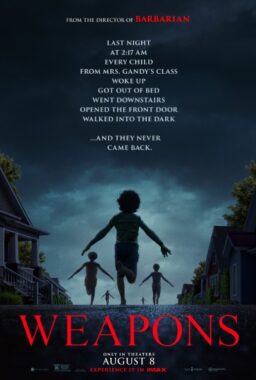Maria Fredriksson’s “The Gullspång Miracle” is about whether a seeming coincidence might be the origin point for a mystery that can be solved by those who are affected by it, and maybe heal their pain. The main subjects are two Norwegian sisters: May, who still lives in Norway at the start of the tale, and Kari, who lives in Sweden. When May decides to move to Sweden to be closer to her sister, the two settle on a particular apartment and are astonished to discover that the owner not only looks exactly like another of their sisters who died decades earlier, but that she goes by the same nickname, Lita, and looks just like her. A series of equally strange coincidences follows, along with revelations about all of their pasts—so many that they decided to ask Fredriksson if she would make a film chronicling all of it.
The result is a charming, moving, and thought-provoking film that retells the story of the sisters and Lita and everyone else involved as they try to figure out the source of the eerie connections and parallels in their experience, from the presence of familiar paintings on the kitchen walls of Lita’s apartment to the eerie resemblance between Lita and their late sister.
The film is also yet another documentary that is wholly or partially a “meditation on storytelling”—with the expected familiar devices, such as a shot of an empty chair which is then filled by an interviewee who sits silently waiting for the director’s instructions, and “outtake” footage of subjects re-enacting the same moment and being asked by the director not to act so much. Here, though, fortunately, such touches actually have a point besides embracing a now-ubiquitous nonfiction filmmaking cliche: the source of the sisters’ pain is a long and complex narrative they didn’t know anything about until fairly deep into their lives, and that’s predicated on falsehoods that were invented and reinforced by loved ones and strangers alike.
Viewers who’ve seen a lot of documentaries will immediately guess the central revelation, and director Fredriksson knows this and has the good taste not to withhold the obvious to manufacture fake suspense and drag things out. Instead, she gives us the gist of the truth pretty early on and devotes the remainder of the story to a meticulous reconstruction of how such a thing could happen and then be hidden from the people whose lives it most affects. If you believe that coincidences are often the iceberg-dip of cosmic design, or at least the endpoint of a chain reaction of interrelated events, you’ll appreciate the validation “The Gullspång Miracle” will give you.

“Common Ground” is a star-studded, handsomely produced, Hollywood-scaled documentary designed to raise awareness of how industrial farming methods, genetically modified crops, and toxic pesticides have destroyed the carbon content of the very soil that’s supposed to be supplying the world with vegetables, and how America’s major chemical companies and their lobbyists have captured American legislatures to protect their bottom line at the expense of human life.
It’s a position paper with panache, directed by Rebecca and Josh Tickel—whose Netflix documentary “Kiss the Ground” took a different approach to the subject. There are split-screens; “on message” pop songs (Aretha Franklin’s “Respect” plays during a section about, um, respecting the soil); closeups of documents and photos that have been jazzed up with state-of-the-art animation and graphics; and voice-overs by a squad of celebrities who tag-team their way through the script and are introduced getting comfy in the recording studio, as in those old TV specials where the host would briefly pretend they didn’t know they were being filmed, then turn to the camera and say, “Oh, hello—I didn’t see you there!” Laura Dern kicks things off and is replaced by Jason Momoa, who is succeeded by Rosario Dawson, Ian Somerhalder, Woody Harrelson, and Donald Glover. Every narrator leans into the urgency of the assignment, but it should be said that the usually A-game-bringing Momoa looks and sounds as if he drove to the studio at sunup straight from the karaoke bar where he spent eight straight hours performing the entire AC/DC catalog.
The movie lays out a dire situation in its opening minutes and cranks up the klaxon as it goes, arranging history lessons and recent and current statistics to make the case that the post-World War II industrialization of farming got more ruthless by the decade, to the point where it has the agriculture answer of the Vietnam-era oxymoron about destroying a village in order to save it. Ninety-five percent of people who identify themselves as farmers or ranchers, we’re told, are company men who never touch the soil with their hands. Genetically modified and patented crops (mostly produced by one corporation, Monsanto) insinuate themselves into the lives of actual farmers in much the way that organized crime sinks its claws into small business owners. Once they’ve got you, they never let you go.
The film’s most fascinating parts contextualize industrial farming methods within the larger story of North America’s colonization by Europeans, who displaced Native Americans whose philosophy stressed harmony with nature, and imported other human beings—African slaves—as unpaid supervisors of rice, cotton, and sugar plantations that owners lacked the skills to run on their own. This section of the movie illustrates the idea of nature being transformed into something unnatural with imagery that shows irregular but lovingly-tended cropland being replaced by machine-perfect rows laid out in the same hard-edged layouts simultaneously applied to every other aspect of life.
There are sidebars on the illnesses caused by applying technological and chemical solutions to ancient farming challenges and sections that show how agriculture corporations sue the bejesus out of any independent farmer that dares challenge them and even hires teams of online fixers to slander whistleblowers and bury search results that aren’t propaganda for their products. Perhaps the most grotesque fact is that as soon as the legal tide began to turn against Monsanto, they put themselves up for sale and were purchased in 2018 by the German drug company Bayer, creating a “circle of profit” by selling both chemical agents believed to cause non-Hodgkins lymphoma as well as the medicine that treats it.
Hope arrives as a return to older techniques that treat the soil as a sensitive and renewable organic thing rather than a profit center ravaged to death and then kept alive. The most persuasive part of the film’s argument for a different strategy is the bottom-line result: Christine Morgan of the Soil Health Institute tells the filmmakers of a study of 100 corn and soy farmers across the midwest who had been successful in applying regenerative practices to their crops: eight out of ten reported greater profits. There are also indications that a farmer’s income is proportional to how much carbon is in their soil. It’s depressing to think that the only viable solution to soil destruction—and the climate change that it intensifies—is to convince the industries responsible that being good is good for business.

Monica Villamizar and Jordan Bryon’s “Transition” earns its mordantly punny title. It’s a documentary and (and self-portrait of) its co-director, a journalist who found themselves in a situation that would sound like the premise of a dark comedy if the stakes weren’t life-and-death: Bryon began transitioning to a trans man at the same time that the subject of his New York Times video dispatches, Afghanistan, was transitioning back to Taliban rule after the US military ended its occupation in 2021.
As if Bryon’s situation weren’t already fraught with potential peril—war zones aren’t known as welcoming places for people who aren’t straight-identifying cisgender men—he’s embedded with Taliban fighters whose leadership is restoring laws and policies that subjugate women. It’s an incidentally perfect setup for a film that’s curious about how people identify as male or female and then devote much of their lives to reinforcing that identity through dress, grooming, body language, and bonding rituals. Bryon discusses the challenges they face with sympathetic parties, including a loving mom, but war journalism requires him to maintain an identity that he’s secretly preparing to deactivate and put behind him.
One key is Bryon learning to acknowledge privileges that he used to take for granted—and still enjoys to a certain extent. One of his colleagues, Iranian photojournalist Kiana Hayeri, responds to his affectionate description of his Taliban sources by noting that he wouldn’t be so welcomed if he weren’t male-identifying, a foreigner, and most of all a journalist they hope will portray them sympathetically. The word “loyalty” comes under the movie’s microscope, too, as Bryon’s inner circle—including his friend “Teddy,” who’s done well for himself by helping foreigners, and his doctor, who has gotten used to the country and says he’s going to stick around no matter what. Without putting too fine a point on it, the movie connects the protagonist to the country he’s covering by showing how different people react when a once familiar reality grows increasingly alien.
The movie is equally compelling as a you-are-there war documentary that shows the chaos and destruction with terrifying immediacy. There are firefights, explosions, aerial tracking shots revealing staggering devastation, and unstinting accounts of the country’s plunge into more raggedy chaos than it had grown accustomed to when the US-controlled at least some parts of the land. Nothing is excessively smoothed-over, and rather than force comparisons or contrasts between aspects that don’t have a lot in common, “Transition” has enough assurance to step back and let picture and sound take over.

“Songs About F***ing” is as cheeky as its asterisk-demanding title. It’s a portrait by filmmaker James Gallagher of Dallas native Marc Rebillet, a long-haired, hard-bodied, bespectacled musician-actor-comedian. Rebillet became a star by hosting live shows on Twitch—often minimally clothed—that were the composer-performer’s answer to improv comedy, complete with call-in guests suggesting topics for him to spontaneously turn into songs. He’s hyperactive, an exhibitionist, and casually profane but also enthusiastic, upbeat, and oddly motivating, blasting loop-based synth music with EDM and funk flavors, alternating edge-pushing lyrics with self-deprecating jokes.
When Rebillet is deep in the zone, flinging his long hair about and bouncing like he’s got springs on the bottoms of his feet, he could be an as-yet-unwritten Jack Black character in a comedy about a spinning instructor and wannabe pop star who brings his keyboard to the gym. “You guys are the shit! Keep it up!” he hollers to the audience at one of the many live shows captured by Gallagher’s camera crew. “Bring us all together; I don’t give a f***!” He’s done joint performances with other artists over the years, some of them a hundred times more famous than himself. But the most on-point teaming might’ve been with “Whose Line Is it, Anyway?” regular Wayne Brady, an improv genius, who would turn a racy song prompt into lyrics that got raunchier with each line. One of Rebillet’s hits was created in response to a woman phoning his show. “I want a song about getting it on with a big-bootied blonde girl,” she said. Rebillet reprises the result, “Work that Ass for Daddy,” for a tour audience and invites his muse on stage. She grinds on him with such abandon that you half-expect her to tuck a 20 into his boxers.
There is a discussion of the advisability of an uber-white hipster affecting a soul-daddy clown stage persona, and a glancing insight into the conundrums and challenges of being a self-made brand in an era of fragmented, streaming-focused audiences. But most of the film is a personality study in the mode of mid-twentieth-century “direct cinema” documentaries where the premise was, “Let’s follow this person around and learn about them and watch them do stuff.”












